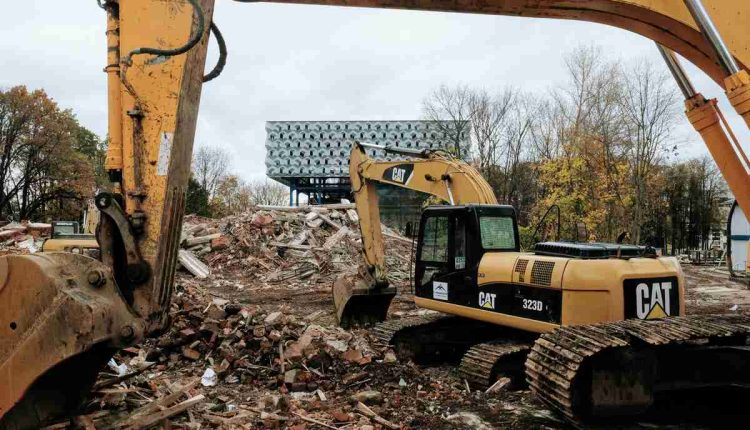The Importance of a Demolition Plan
A demolition plan is an essential document that outlines the systematic and controlled dismantling of structures to ensure worker and neighbor safety while mitigating risks and environmental impact. Best way to find the Rancho Cucamonga Demolition Contractor.
Before commencing any demolition work, an initial building and structure survey and hazardous material removal are conducted. Subsequently, utilities are turned off before creating a demolition work plan and starting operations.
Building and Structure Survey
A good demolition plan should contain all the information needed to carry out its activities safely, such as an assessment of both the building to be demolished and its surroundings. This information will enable a team of workers to determine the most efficient method and salvage any salvageable materials before commencing with demolition work – something which must take place for safety’s sake, lest accidents arise that cause injury or even fatalities among employees involved in such projects.
Survey requirements must include information about the building or structure to be demolished, such as its height and size, any hazardous materials on-site, such as asbestos, that need removal before demolition begins, and an action plan and timeline for the deconstruction work.
Based on the nature of their work, PCBUs may be required to prepare and submit a Demolition Work Plan (DWP). The plan must be sent to relevant authorities, with information regarding risk assessments, contractor performance reviews, schedule conformance issues, and environmental concerns/corrective action documented within its pages. It must also document where any underground or aboveground essential services that must be identified during demolition operations need to be protected during their work.
Hazardous Materials Removal
Hazardous Materials Removal is part of any comprehensive demolition plan and deals with any dangerous substances found on site, such as asbestos and carcinogenic chemicals used during building. Specialist asbestos removal companies will safely dispose of asbestos-laden items before demolition begins; other hazardous materials, including flammable items, heavy machinery, and old chemicals, will also be safely discarded at this stage. Any underground tanks or pipes will also be thoroughly inspected before being cleared out before final disposal is carried out; drainage issues within the building itself, as well as flooding or erosion issues, will be assessed before complete demolition begins.
At this phase, both the layout of a building and its method of demolition will be determined. Some buildings may be demolished using traditional techniques like wrecking balls or hydraulic hammers, while others could use explosives or even an implosion method to bring down their structures.
Demolition Work Plans are essential components of any demolition project and should be clearly detailed to ensure everyone involved with it can stay safe during its execution. Such plans provide protocols for asbestos removal and structural bracing, as well as schedules of demolition processes and arrangements for site supervision, along with details regarding how electricity, gas, water, or sewer lines will be capped off before demolition takes place, if necessary.
Permits
Demolition requires lots of paperwork and permits, as well as shutting off utilities and capping them off properly. Since demolition projects often generate large volumes of debris, it’s wise to arrange for a roll-away dumpster at your site and arrange to dispose of it properly.
A demolition plan must include all necessary permits for the project, such as demolition, building, plumbing, and electrical permits, depending on the scope of work. Furthermore, an intent to demolish form must be signed by all property owners to comply with local government requirements and help ensure existing structures are not destroyed without prior permission.
Depending on the nature of the building being demolished, additional permits may be needed if deconstruction involves historic structures. Furthermore, soil replacement permits may also be necessary if restoration is needed after deconstruction.
A demolition work plan (DWP) should include safety measures for the entire demolition process. These should consist of site induction and safety meetings prior to beginning demolition work; emergency plans; methods to reduce noise and dust generated during the process; emergency plan strategies, noise-cutting technologies as well as techniques that ensure all workers involved in the process have received full training on safety processes; emergency response strategies if unforeseen accidents arise; as well as methods that reduce noise during dust production during this phase. Finally, documentation is critical as evidence of compliance for safety purposes during this phase of work. DWP planning is also crucial when documenting that all workers involved have received complete induction training in all safety processes before beginning demolition activities.
Execution
Before commencing the demolition process, experts devise a plan to bring down the structure safely. Depending on its design, this could involve reinforcing certain parts or taking other precautions to protect nearby buildings and individuals. In some instances, a structure might be dismantled piecemeal, while in others, it will come tumbling down more dramatically with tools like wrecking balls.
As part of your planning phase, it’s crucial to determine which materials can be recycled and how they will be separated from other waste streams. Sorting should occur both prior to demolition and during its progression to ensure proper disposal methods.
Permitting is another essential component of any project, and an experienced contractor should know exactly how to navigate this process in order to help avoid legal complications and delays.
An effective demolition plan is critical to any industrial demolition project. Proper planning ensures the process runs efficiently while protecting workers, neighbors, and the environment from injury during demolition. Therefore, it is imperative to enlist the services of an expert demolition contractor to ensure this task is accomplished safely and correctly.
Read also: Insulators Glass – A Popular Collectible With Many Fun Shapes and Colors


